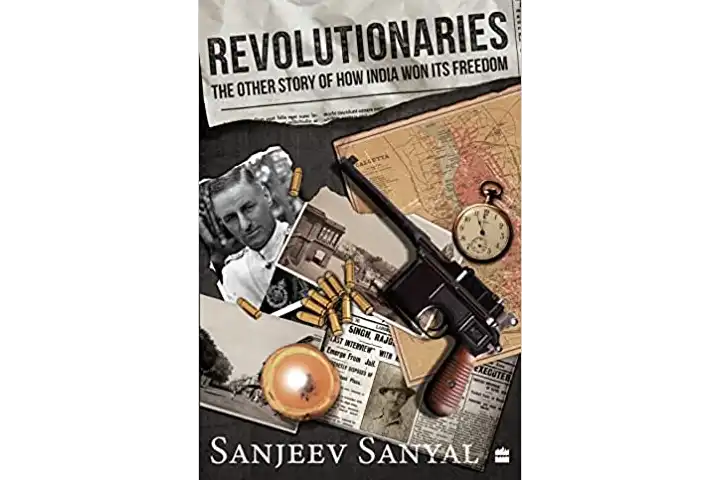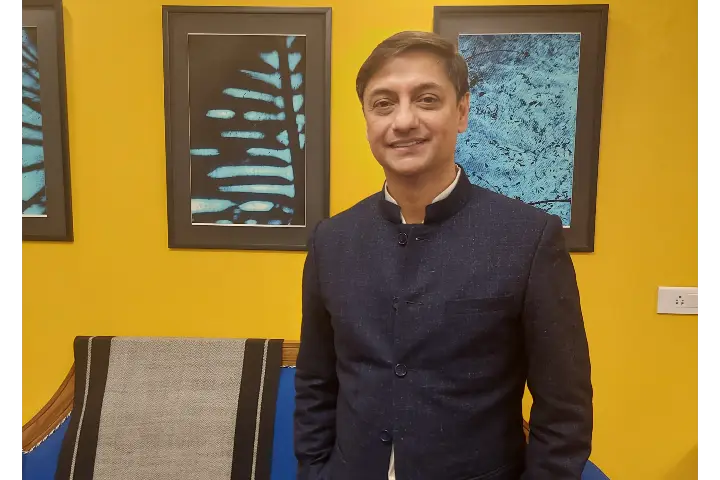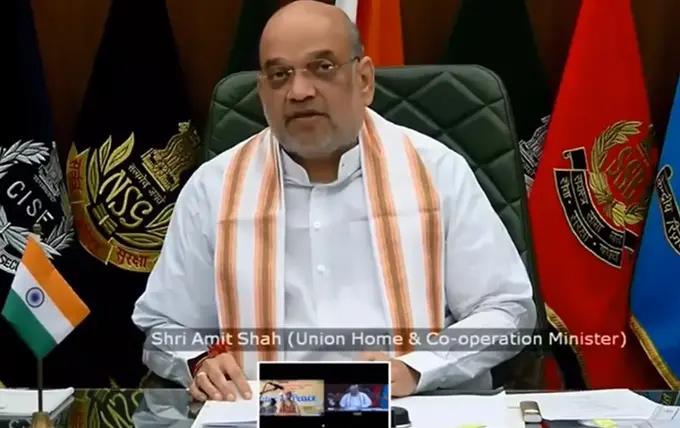Sanjeev Sanyal, Member of the Economic Advisory Council to the Prime Minister, is not only known as an economist but also as a historian. In his latest book, ‘Revolutionaries: The Other Story of How India Won Its Freedom’, Sanyal outlines the role of the forgotten revolutionaries, who believed in armed resistance and their immense contribution to India’s freedom struggle.

Sanyal, through his writings, has brought out the “other narrative” of history which had often been buried. Sanyal speaks exclusively to India Narrative about the Indian freedom struggle and his latest book. An excerpt.
Q. India is seen as a seat of violence. You are building an alternative narrative which is quite the opposite. Reason?
The official narrative that India’s freedom struggle is uniquely non-violent and as if the British were politely asked to leave and they left – that is absolutely faulty. Unfortunately, that is a narrative built intentionally around India’s freedom struggle to suit a particular section of political class, intellectuals and power brokers. We have had a very organised armed struggle as well and if you look back into history, you will see the Marathas, the Sikhs, the 1857 revolt – all these were armed resistances The armed resistance was as important as the non-violent movement and it was the culmination of both that led to our independence. But systematically the role of the revolutionaries —Rashbehari Bose, Chandrashekhar Azad, even Netaji –and many others has been deliberately erased and edited.
Rare letter: Support Subhas Bose against "Gandhi party" – Rashbehari Bose to Sachindra Nath Sanyal.
Sanyal was co-founder of the Hindustan Republican Army and mentor of revolutionaries like Chandra Shekhar Azad and Bhagat Singh. 🙏#RashBehariBose #Netaji125 pic.twitter.com/TWe2ubgA6r
— anuj.dhar@axl (@anujdhar) May 25, 2022
New, alternative narratives built on truth have to come out on new platforms. And I am absolutely unapologetic about writing about this movement. My great grandfather, grand uncle was part of the freedom movement. I have no shame in portraying the truth and it is time to bring it out – create that alternative narrative based on facts.
The armed movement was individualistic and fragmented. Is that why it failed?
The armed movement was a big one and not at all fragmented as it has been made out to be. The revolutionaries had linkages within India as well as outside – with the German, Japanese, Irish. It involved a large number of people and let me tell you they had a wide following even within the Indian National Congress. Now if you take the example of the Jallianwala Bagh massacre, you will find that the trigger was the Rowlatt Act (which was passed in March, 1919 allowing the government to imprison anyone associated with sedition without trial).
1919 :: Demonstration In Bombay Against The Black Act ( Rowlatt Act )
"BLACK SUNDAY"
" If You Value Your Freedom You Will Join "
#AzaadiKiNishaniyan pic.twitter.com/qGxtfOq048
— indianhistorypics (@IndiaHistorypic) August 11, 2021
You have also brought out the social, cultural and religious churn that took place at that time. How was this social side connected to the armed resistance?
India has had many great thinkers. We have Sri Aurobindo, Swami Vivekananda, (Rabindranath) Tagore, Dayanad Saraswati, Bal Gangadhar Tilak, VD Savarkar– you have many names. They took pride in the culture and their roots. The revolutionaries of that time had a huge connection with the thinkers of that time. They derived their identity and strength from these thinkers and reformers.
In fact, Aurobindo went on to set up the Anushilan Samiti (a society or club that focused on fitness and provided active support to the revolutionaries fighting the British). But how is it that most of the people in the country have no knowledge of this part of history?
Also the day when Maharaj Sayaji Gaekwad III of Baroda caused a big uproar by refusing to bow properly to the British monarch. A small act of defiance from the man who also funded the likes of Aurobindo Ghosh when he was building the Anushilan Samiti revolutionary network. https://t.co/4rI0Ectk1B
— Sanjeev Sanyal (@sanjeevsanyal) December 12, 2021
Why is it so?
India has had many great thinkers. We had Aurobindo, Vivekananda, Gandhiji, Dayanand Saraswati, (Bal Gangadhar) Tilak– you have many names. They took pride in the culture and their roots. But by the 1960s, there were just two strands of leftism left, one the Marxist Left and two, the Nehruvian Left. Also, most of the senior revolutionaries did not survive till independence. Many of those who survived later died of abject poverty. And importantly, there was no space for any alternate thinking. Alternate thinking was evicted—whether it was BR Shenoy, RC Majumdar or anyone else for that matter. This was done with the state power. So finally, only one side of the narrative that suited a few was documented.
Can you specify?
Savarkar’s brother (Narayana Savarkar) was stoned to death. No proper enquiry, no investigation. There was a pogrom carried out in 1948 (primarily targeted at Maharashtrian Brahmins and according to estimates about 8000 were killed). Again, no account of it. It has been erased. Same goes with the Sikhs and Bengalis. What about the Marichjhapi killings? (Marichjhapi is an island in West Bengal’s Sundarbans, where mostly the Dalit Hindus had resettled after the Partition. The Left Front government led by late Chief Minister Jyoti Basu started with an economic blockade cutting off supplies of all essentials and then resorting to killings of thousands). Has it been written about?
Now let’s look at the 1991 Liberalisation exercise. It was not due to any sudden change in intellectual heart. The Indian economy had collapsed (India was on the brink of a sovereign default with the foreign exchange level dropping to less than $6 billion) and that was also the time when the Soviet Union disintegrated. We had no other choice but to go in for economic liberalisation. That happened but the narrative built around it is different.
What I am saying is that we must have the courage to present the whole truth.
Would you say that the new rising India is finally shrugging off the colonial mindset?
Look, while India was under British rule, that was not the first time that the country came under a foreign rule. India has been under some kind of foreign occupation much before the British. We have had the Mughals, we have had the Turks. So there has been resistance from time to time. For example, the Marathas rose against the Mughals.
Going back to why history has not been correctly documented is also because of the foreign powers. These foreign powers have been trying to subvert the real narrative from time to time. Even today, when you see the western think tanks’ absurd ratings for India, you see how distorted those are.
Do you think the new India is better prepared to deal with such situations?
I would hope so. At least, we are doing our best to put up a sincere effort in countering that narrative. Besides, the role of Indian collaborators cannot be undermined. Who are these collaborators? The first two generations of intellectuals (post 1947) and power brokers benefited by collaborating with the political class. This section is still going strong. Alternative narrative and thinking have been systematically killed. That must change. It is time we start speaking up.















